Brand Strategy
Brand Strategy Core A Comprehensive Guide to Create Winning Brand Strategy
09.02.2025
By Shaikh Asif

Brand Strategy
09.02.2025
By Shaikh Asif
In this comprehensive guide, we will take you through the step-by-step process of Brand Strategy Core, which is our proven guide to creating a successful brand. We will provide practical insights and actionable steps to help you develop a winning brand strategy that resonates with your target audience and drives success.
To maximize the practicality of this framework, I will provide you with a real case study on how we successfully developed a winning brand strategy for Omulux. This will help you learn more effective ways. Note: we used our portfolio project Omulux (a luxury real estate brand) to explain our brand strategy core guide.
If you’re new to the branding or design world and unsure about the intricacies of brand strategy, I strongly encourage you to delve into its fundamentals. Understanding brand strategy is essential—it’s the cornerstone that supports your business’s vision, drives market differentiation, and fuels long-term growth. So, take the first step towards mastering brand strategy and see as it transforms the trajectory of your business.
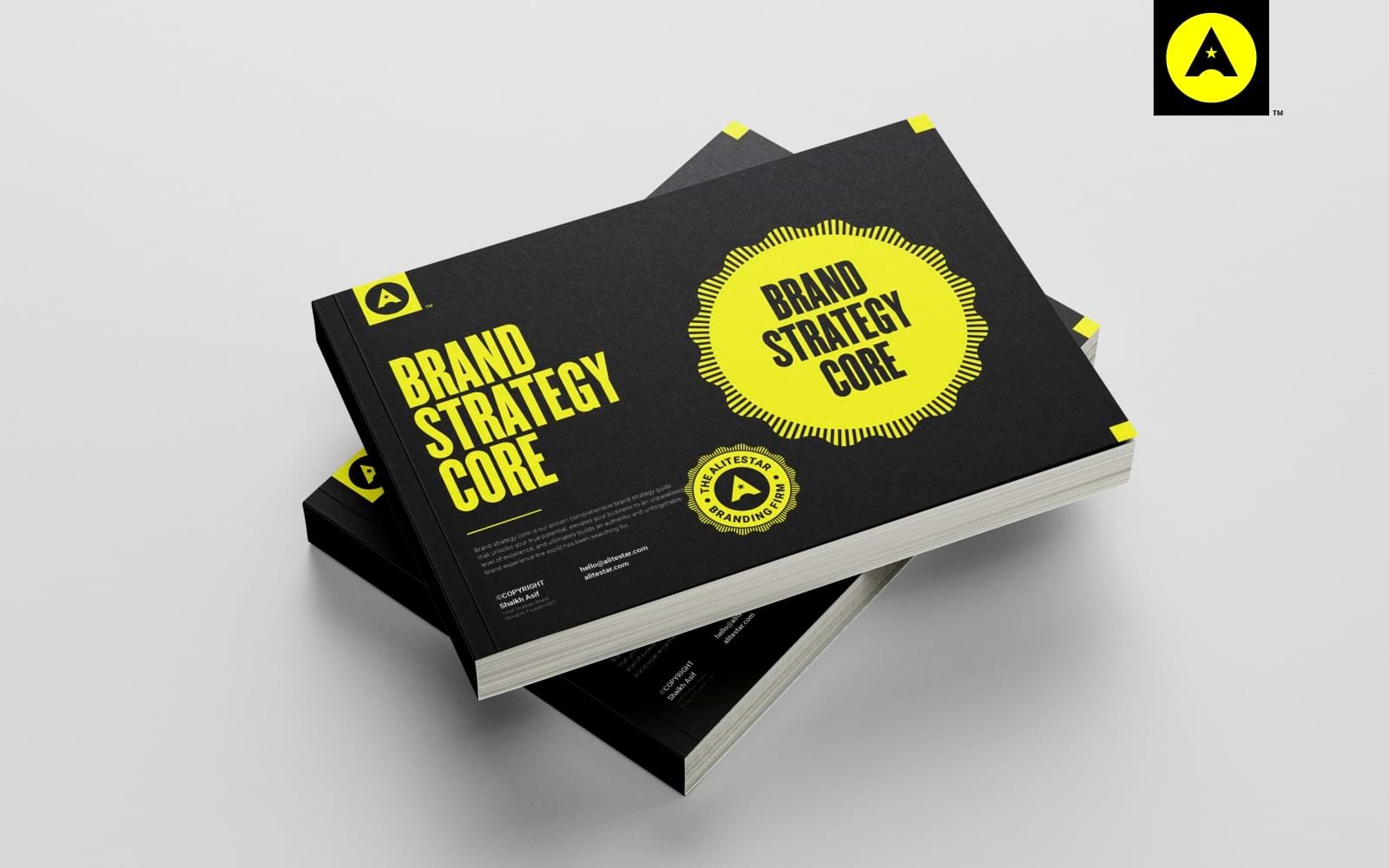
Our comprehensive brand strategy guide covers all the essential elements of brand strategy. The framework consists of 3 brand strategy modules—Brand Essence, Brand Positioning, and Brand Personality—and 9 brand strategic elements that make a well-thought-out brand strategy guide that elevates your brand to unparalleled heights of success and guides you for all future branding efforts: This is the brand strategy core framework we use to help clients build a successful brand.
Purpose
Vision
Values
Target audience
Market Audit
Prioritize goals
Brand Archetypes
Personality pyramid
Mind map
If you’re starting a business or an established business owner, the journey to brand success is pivotal for your company’s growth. As a CEO eager to strategically build a successful brand, embracing a core framework of brand strategy is not just beneficial—it’s crucial. This framework provides actionable steps and expert guidance tailored to propel your business forward in the competitive business world. Let’s start with the first brand strategy module, which is the brand essence.
We’re going to start by defining your brand’s essence—the core values, mission, and vision that set your business apart. What does your brand stand for, and why does it matter? Brand essence is the core, intrinsic nature of a brand—the qualities, values, and principles that define its identity and purpose. It’s the distilled essence of what a brand represents and what it means to its audience. Think of brand essence as the soul of your brand—the intangible qualities that make it unique and memorable. It’s about forging emotional connections, guiding decision-making, and creating a unique identity. A well-defined and communicated brand essence is a powerful tool for differentiation, trust-building, and long-term success in a competitive business world.
The brand essence consists of three key steps. First, you need to define the reason behind what you do. Next, you need to establish a clear and ambitious vision for your future goals. Finally, the core values and beliefs that guide your decisions and actions. Now, let’s dive into the first brand strategic element of brand essence: brand purpose.
This is the first and most important brand strategic element of brand essence. You need to define the purpose or the reason behind what you do and how you bring value to others. What’s the ultimate reason behind what you do? It’s important to know the ultimate reason behind what you do so that you can build confidence among your team, communicate your value, and connect emotionally with your audience. Let me explain to you what brand purpose is and why it’s necessary. Brand purpose is the fundamental reason for a brand’s existence beyond just making a profit. It defines the positive impact a brand aspires to create in the world.
A well-defined brand purpose is not just important; it’s essential for building a meaningful and successful brand in today’s conscious and purpose-driven consumer landscape. Why do you need it? Having an impactful purpose can differentiate you from others, build trust and loyalty with your audience, and inspire your team to achieve future goals.
For example, the purpose statement of BMW could look like— "To inspire people with innovative design, cutting-edge technology, and a commitment to excellence.”
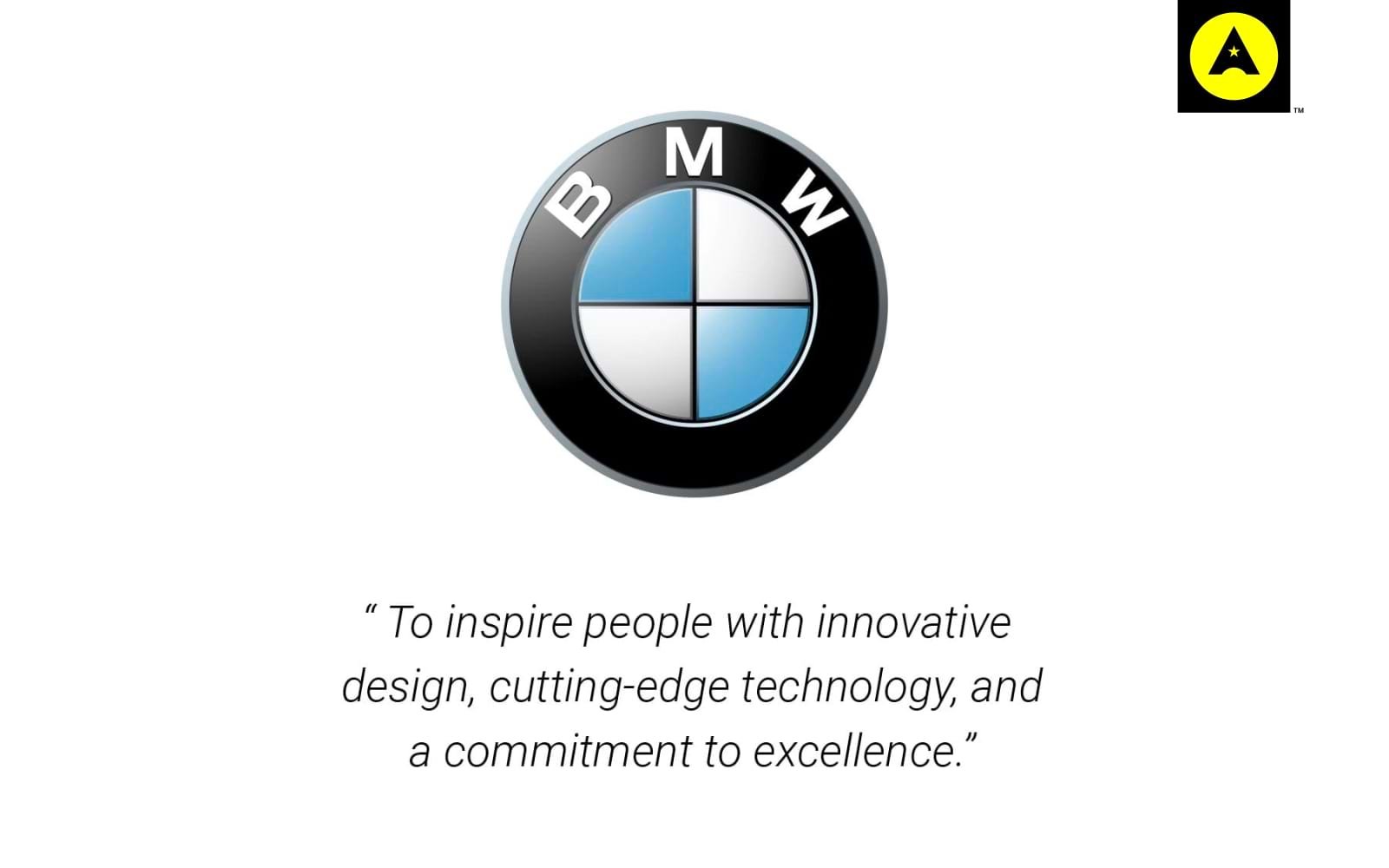
We have defined an impactful purpose statement of Omulux by using the golden circle framework. The framework consists of four key components: Who, What, How, and Why. Let’s Craft a compelling brand purpose by answering “Why,” “How,” “What,” and “Who” to deeply connect with your audience.
Let’s start by focusing on the “Who” aspect. This step is crucial in identifying and understanding your target audience, which comprises the people your brand aims to serve. By recognizing those who are most likely to connect with your brand’s purpose, values, and offerings, you can tailor your marketing strategy accordingly.

Next, describe what your brand does and what it offers to bring its purpose and values to life. This is where you define your products, services, and actions in a way that aligns with your “Why” and is informed by your “How.” It’s the tangible manifestation of your brand’s purpose. Your tangible offerings serve as proof of your brand’s purpose and values in action. Kindly describe how you offer help to others, or what products and services you provide and the value they bring.
Third, outline the values and principles that guide your brand in achieving its purpose. It defines the way the brand conducts itself, how it interacts with its audience, and how it fulfills its purpose. These should align with your brand’s “Why” and serve as a compass for your operations and interactions.
And finally discuss your why, the core purpose. Begin by identifying the core reason your brand exists beyond making a profit. Your “Why” should be a statement that captures your brand’s mission, passion, and contribution to the world. The “Why” is the emotional core of the brand that inspires and motivates. It creates a deep, emotional connection with the audience. So, ask yourself, what is the higher purpose or cause that drives your brand? Once you have a clear understanding of your who, what, how, and why, it’s time to craft your purpose statement. Craft Your Brand Purpose
Craft Your Brand Purpose Statement:
Now that you have a clear understanding of the "Why," "How," and "What" of your brand, you can craft an impactful and compelling brand purpose statement that encompasses all three components. Combine your "Why," "How," and "What" into a single, impactful statement that encapsulates your brand's essence and mission. Crafting a purpose statement that resonates with your team and target audience may take some time and multiple attempts. Ultimately, the purpose statement should be clear, concise, and powerful. Once you have your purpose statement, it's time to focus on your long-term goals.
After defining the reason behind your existence in an impactful actionable purpose, you also need a bold audacious vision that directs you toward the right direction to achieve your future goals or your ideal state or end desired state. A brand vision is a statement that describes the desired future state of your brand. It provides a direction and inspires your team and stakeholders by painting a clear picture of what your brand wants to achieve in the long term."
Your vision statement should express where you envision your brand in the future, typically in 2, 5, or 10 years.
What is the grand vision you're striving for?
Let’s start with your brand's current state, Where your business is right now?
What's the current state of your brand in terms of your business metrics?
Look at things like market share, customer base, revenue, and brand recognition.
Figure out what your brand is doing well and where it needs to improvement.
How does your brand perform in comparison to competitors?
What immediate goals do you aim to achieve with your brand?
Identify your brand's strengths and weaknesses. What are you good at, and where do you need improvement?
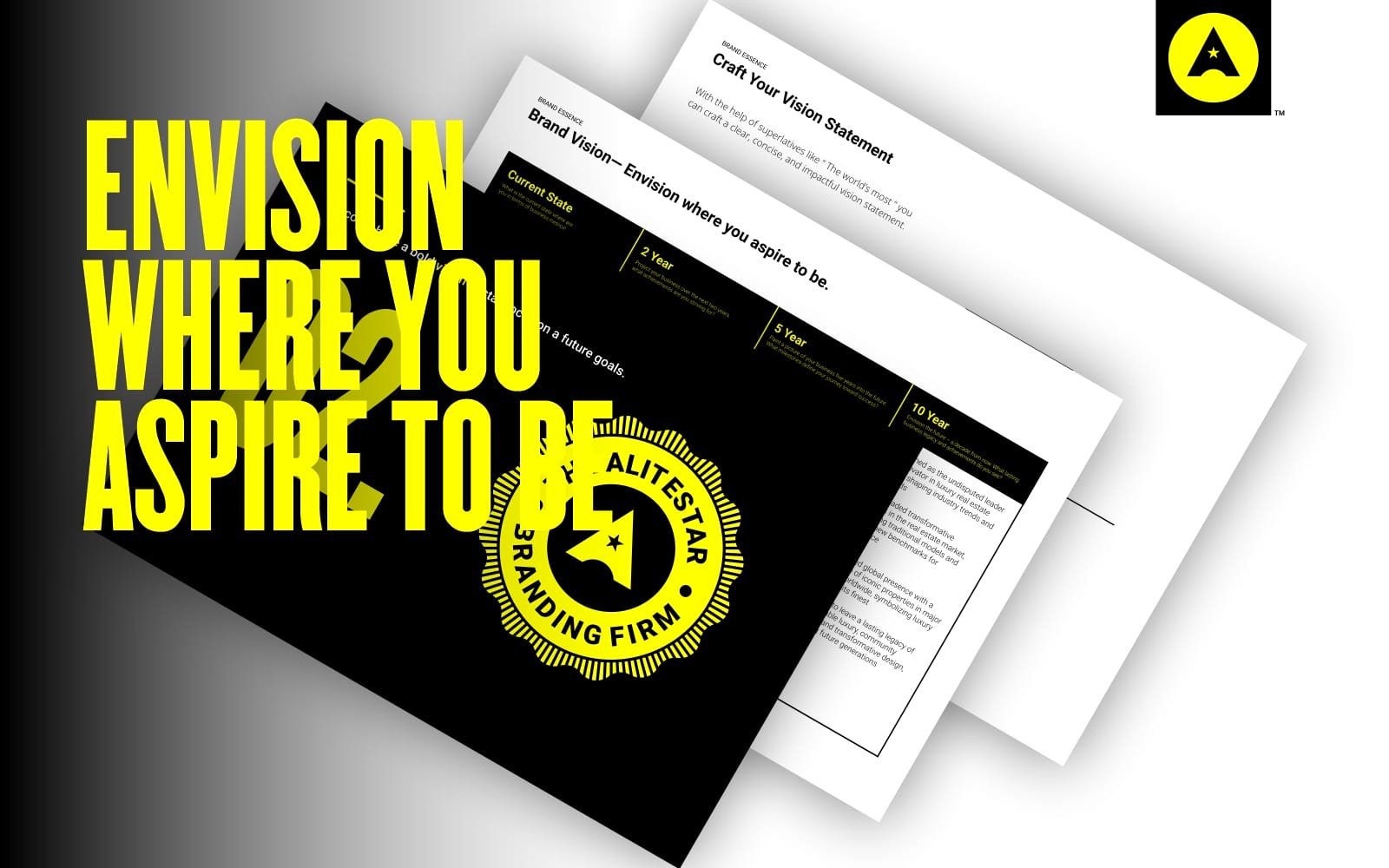
Now, think about where you see your business in the next two years.
What are your aspirations for the future?
Do you aim to broaden your customer base, venture into new markets, or boost your revenue? Think about what goals you want to achieve and how you want your business to grow in the upcoming years.
Where do you envision your brand to be in the next two years?
What specific milestones or achievements do you aim to reach within this time frame?
How do you plan to grow or evolve your product/service offerings?
What changes or improvements do you foresee in your brand's market position?
This helps clarify your vision of success and what you're striving for. As you envision your business in 2 years, think beyond the immediate future. Envision the growth you aim to achieve over the next five years. What milestones do you aspire to reach? Are you aiming to become an industry leader, expand your product line, or enter global markets? Consider the growth direction and significant accomplishments you aim to achieve. This long-term perspective guides your strategic planning and directs your efforts toward accomplishing significant goals over the next five years.
How do you picture your brand's growth and development in five years?
What expansion plans or new markets do you plan to explore by this time?
How will your brand adapt to upcoming industry trends and consumer behavior shifts?
What impact do you envision your brand making in the market after five years?
However, you can’t predict the future, but being clear on your ambitions and goals will guide you and your team in the right direction.
If you achieve all of your ambitions and goals then what would be your brand 10 years ahead? Envision the broader impact your brand seeks to create over the next decade. Think about how your brand contributes to society and the environment. Looking a decade ahead involves setting ambitious and visionary goals for your business. Imagine the transformation and impact you aim to achieve over the next ten years. This long-term horizon involves thinking on a broader scale—consider where you see your brand in the market, the innovations you'd like to introduce, and the level of success you anticipate. Consider the potential for industry leadership and market disruption. How do you plan to shape your industry? Visualize your brand's global presence and influence on a larger scale.
Think about the legacy your brand wants to leave for future generations. How will your brand be remembered? Envision your brand's far-reaching impact on a global scale, potentially touching every corner of the world.Consider your brand's role in a sustainable and equitable future.
What is the long-term vision and ultimate goal for your brand in a decade?
How will your brand maintain relevance and innovation over such a period?
What transformative changes do you expect in your brand and its market presence?
What legacy do you wish your brand to leave behind in ten years?
Looking ahead ten years can be daunting. It's not about predicting the future with perfect accuracy. Instead, it's about having a bold and ambitious vision that shapes your brand's decisions and helps you navigate through uncertainties. It's about being prepared for potential challenges and staying focused on a long-term path of growth and positive impact. Now, let's explore the ultimate or desired destination when everything progresses as planned along the path. Crafting a clear, concise, and impactful vision statement is achievable by using superlatives such as "The world's most"
or "To be the most."
Like your mission statement, your vision statement should inspire and excite. It should capture the imagination of your team and resonate with your audience. And remember to use powerful and evocative language that paints a vivid picture of the future. Avoid generic or vague statements. For example the vision statement of microsoft and tesla are:
Microsoft: " To empower every person and every organization on the planet to achieve more."
Tesla: " To be the world’s best electric car company.

Brand values are the last strategic element of brand essence.
What are brand values?
Brand values are the guiding principles and beliefs that define the character and culture of your brand. They shape how your brand behaves, interacts with stakeholders, and makes decisions. Identifying your brand’s core values is a vital step in creating an authentic and purpose-driven brand. Defining your brand values is akin to establishing the guiding principles that shape how your brand operates and connects with its audience. It’s about crystallizing the fundamental beliefs that steer your brand’s actions, decisions, and overall presence. Instead of choosing conventional terms like “honesty” or “timeless,” which lack depth and fail to make your brand stand out, the focus should be on selecting unique, actionable values that resonate deeply with your brand’s identity.
These values serve as the heart of your brand, guiding your team’s behavior, communications, and strategies. Crafting distinctive and meaningful brand values cultivates a unique brand identity, fostering consistency and authenticity in every interaction and engagement.
Let us use a simple yet effective framework to identify your core values. The framework consists of two columns. The first column is for your thoughts and experiences, while the second column is for your emotions and feelings. We also have two rows: the first one is for constructive values, and the second one is for destructive values.

Let’s begin by thinking about the most desirable thoughts or experiences you want your audience to associate with your brand.
What positive attributes or qualities should your brand reflect?
How do you want your audience to feel when interacting with your brand?
What do you do exceptionally well?
List 4 to 5 constructive thoughts/experiences.
As for Omulux, for example, it would go something like this:
Luxury living experiences in a serene environment
Exclusivity and elegance in design
Seamless integration of modern amenities
Now, let’s explore the emotional impact of these constructive thoughts/experiences on your audience.
What positive emotions do these thoughts evoke in your audience? How should your audience feel when experiencing your brand?
List 4 to 5 constructive emotions/feelings.
For example (Omulux):
Awe, admiration, appreciation
Prestige, exclusivity, sophistication
Comfort, convenience, satisfaction
So once we have a few constructive thoughts/experiences and emotions/feelings, let’s turn this in the opposite direction.
Consider the opposite of constructive thoughts/experiences. What are the undesirable thoughts or experiences that you want to avoid? Think about what negative aspects or behaviours your competitors exhibit or what your brand should steer clear of.
What negative aspects or behaviours should your brand avoid at all costs?
How do your competitors fall short, and what negative experiences do you aim to steer clear of?
What are the common pain points or frustrations that your customers experience?
List 4 to 5 destructive thoughts/experiences.
Example:
Lack of attention to detail
Mediocre craftsmanship
Environmental negligence
Now, let’s think about the emotions/feelings associated with these destructive thoughts/experiences. What negative emotions do these thoughts trigger in your audience? What negative emotions should your brand avoid triggering in your audience?
Example:
Uncertainty or lack of trust in a brand’s reliability can lead to feelings of doubt.
Worry or unease about future interactions or outcomes can stem from past negative experiences.
Unmet expectations or poor experiences can result in feelings of disappointment.
Finally, identify 3 to 5 core brand values that your brand should adopt to ensure the cultivation of constructive thoughts/experiences and emotions/feelings. Clearly define each core value in a sentence or two. Provide context for what each value means for your brand.
These values will guide your brand’s actions and behaviors, helping you consistently deliver the desirable experiences. For example, the brand values of Apple are:
Excellence, Simplicity
Quality, Accessibility
Design, Innovation.

Again, it is recommended to spend some time, because crafting unique and strong brand values that define who you are and align with your unique identity may take effort, strategic understanding, and precise knowledge. Your brand values serve as the guiding principles and help in decision-making, so they should be as unique as your brand and ultimately help you stand out in the crowd. Having successfully navigated the initial module of our brand strategy core, ‘Brand Essence,’ it’s time to embark on the next critical phase: ‘Brand Positioning.’ This is where the true test of strategic branding begins.
While Brand Essence is a subjective reflection of your company’s core values and can be shaped with our structured framework, Brand Positioning demands a meticulous approach. It’s the cornerstone that determines how your brand will be perceived in the bustling business world.
To achieve a position that not only stands out but also remains unbeatable by competitors, precision is key. This task is best undertaken with the guidance of an expert brand strategist or a seasoned strategic branding and design agency. Such professionals or agencies, known for their strategic acumen, can provide an objective assessment and craft a positioning strategy that ensures your brand shines in the marketplace, driving business growth and solidifying your status as a formidable player in your industry.
Brand positioning is a critical aspect of marketing that defines how a brand is perceived in the minds of its target audience relative to its competitors. It helps your brand stand out, establish a unique identity, and communicate its value proposition effectively.
Brand positioning refers to the space a brand occupies in the minds of its customers and prospects. In the book “Positioning: The Battle for Your Mind” by Al Ries, the concept of positioning is introduced as a battle for space in the consumer’s mind. Ries emphasizes that in today’s crowded marketplace, consumers are bombarded with messages and choices. Therefore, a brand’s success hinges on its ability to carve out a unique position in the consumer’s mind.
According to the concept of positioning, it’s not about what companies do with their products; it’s about how consumers perceive them. It’s about crafting a distinctive, favourable, and differentiated image of the brand in the minds of consumers.
Effective brand positioning is crucial for several reasons:
Differentiation: Differentiation is key for a brand to stand out in a crowded market. It’s important to identify and emphasize unique qualities that set the brand apart from its competitors.
Clear Message: The brand should aim for a clear and simple message that consumers can easily understand and remember.
Consistency: Consistency is also crucial; the brand’s positioning must be consistent across all interactions and touchpoints, including advertising, product quality, customer service, and brand communications.
Distinct Mental Space: By occupying a distinct and favourable place in the consumer’s mind, the brand creates mental space and can own a specific attribute or concept that consumers uniquely associate with it.
Audience Resonance: Lastly, the brand’s positioning should resonate with the needs, desires, and aspirations of its target audience.
Understanding the target audience and catering to their preferences is crucial. Effective brand positioning helps create a strong connection between your brand and its audience. It allows consumers to perceive your brand in a way that fulfils their needs, thereby influencing their decision-making process in your favour.
In this brand strategy module, first, we will learn about your brand’s target audience: their demographics, such as age, gender, location, income, education, etc., and psychographics: their needs, pain points or challenges, and desires or interests. It helps you understand what your audience cares about and how they make decisions, and what problems they are trying to solve so that you can resonate with them emotionally.
Unlocking the Power of Target Audience Analysis for Brand Mastery
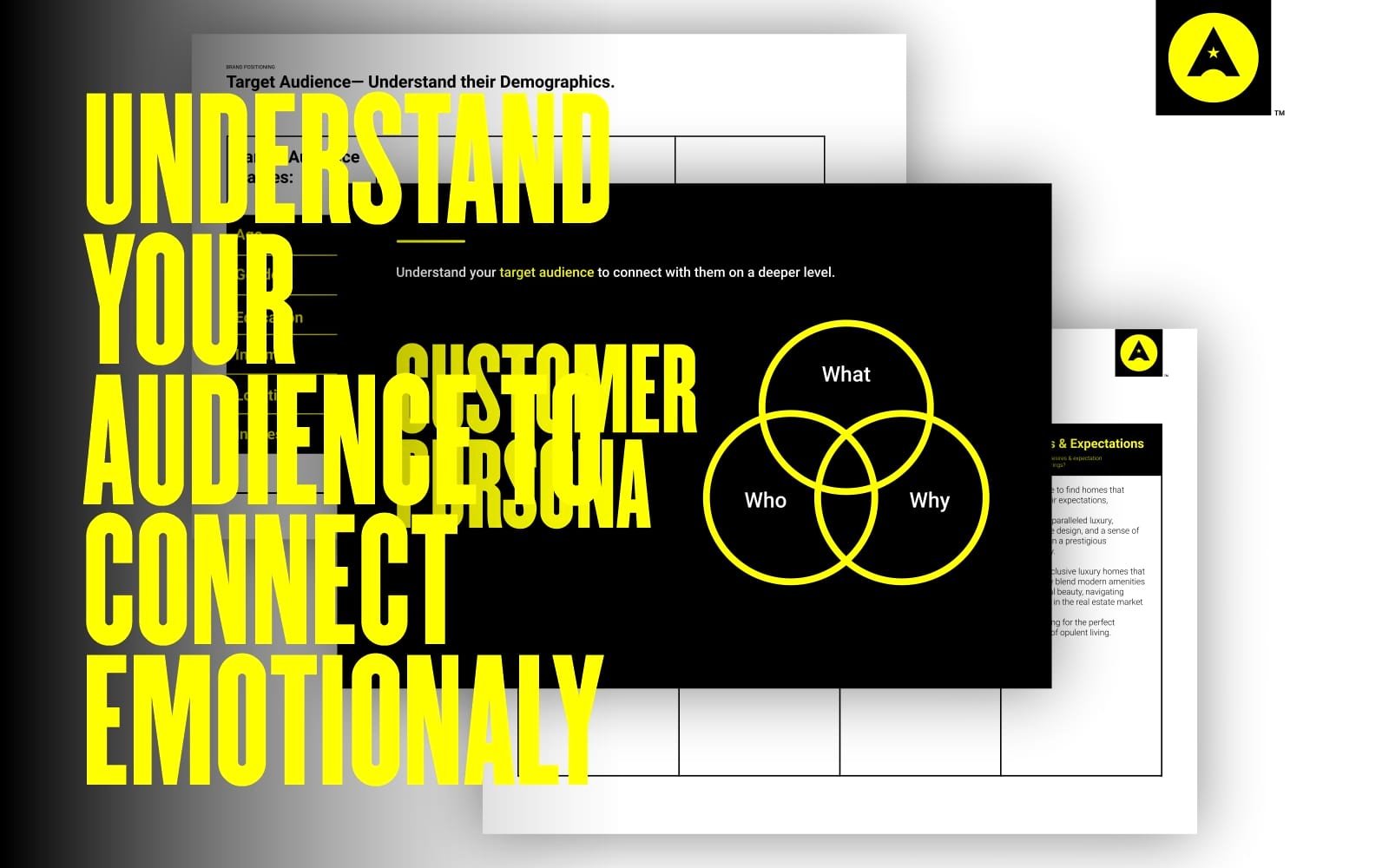
As a startup founder, small business owner, or entrepreneur, you know that building a brand isn’t just about having a great product or service. It’s about connecting with the people who will love and support what you do. That’s where the magic of target audience analysis comes in. Here’s why it’s a game-changer:
Pinpoint Precision: Knowing your audience means you can tailor your brand’s message to speak directly to their hearts. It’s like having a conversation with a good friend instead of shouting in a crowded room.
Strategic Spending: With audience analysis, every dollar you spend on marketing works harder for you. Why? Because you’re reaching the people most likely to become loyal customers.
Authentic Connections: When you understand your audience, your brand becomes more than a name. It becomes a trusted ally in their lives, leading to a solid and authentic brand that stands the test of time.
Future-Proofing: By analyzing your target audience, you’re not just building for today. You’re gathering insights that will guide your brand’s evolution and ensure long-term business growth.
We create a detailed customer persona and user journey map based on the target audience research (demographics and psychographics) that will help position your brand as a leading industry expert by creating a strong brand identity that resonates with your audience. Next, we move toward market research to analyze your competitors and find the gap in the market to differentiate from the rest.
Competitive analysis is a crucial step in strategic planning, helping businesses understand their position in the market relative to competitors. It involves gathering and analyzing information about your competitors to identify points of differentiation and ultimately become a standout.
Why conduct competitive analysis?
Unveiling Market Mysteries: Market research illuminates the landscape of consumer behavior, preferences, and trends, discovering what your audience truly desires.
Scouting the Competition: Knowing your rivals’ strengths and weaknesses gives you the strategic advantage to position your brand effectively.
Navigating Market Shifts: Markets are always changing, and a thorough audit keeps you ahead of the curve.
Crafting a Unique Value Proposition: With competitive analysis, you can carve out a niche for your brand that no one else can claim.
Maximizing ROI: Every dollar spent on marketing becomes an investment with high returns when backed by solid research.
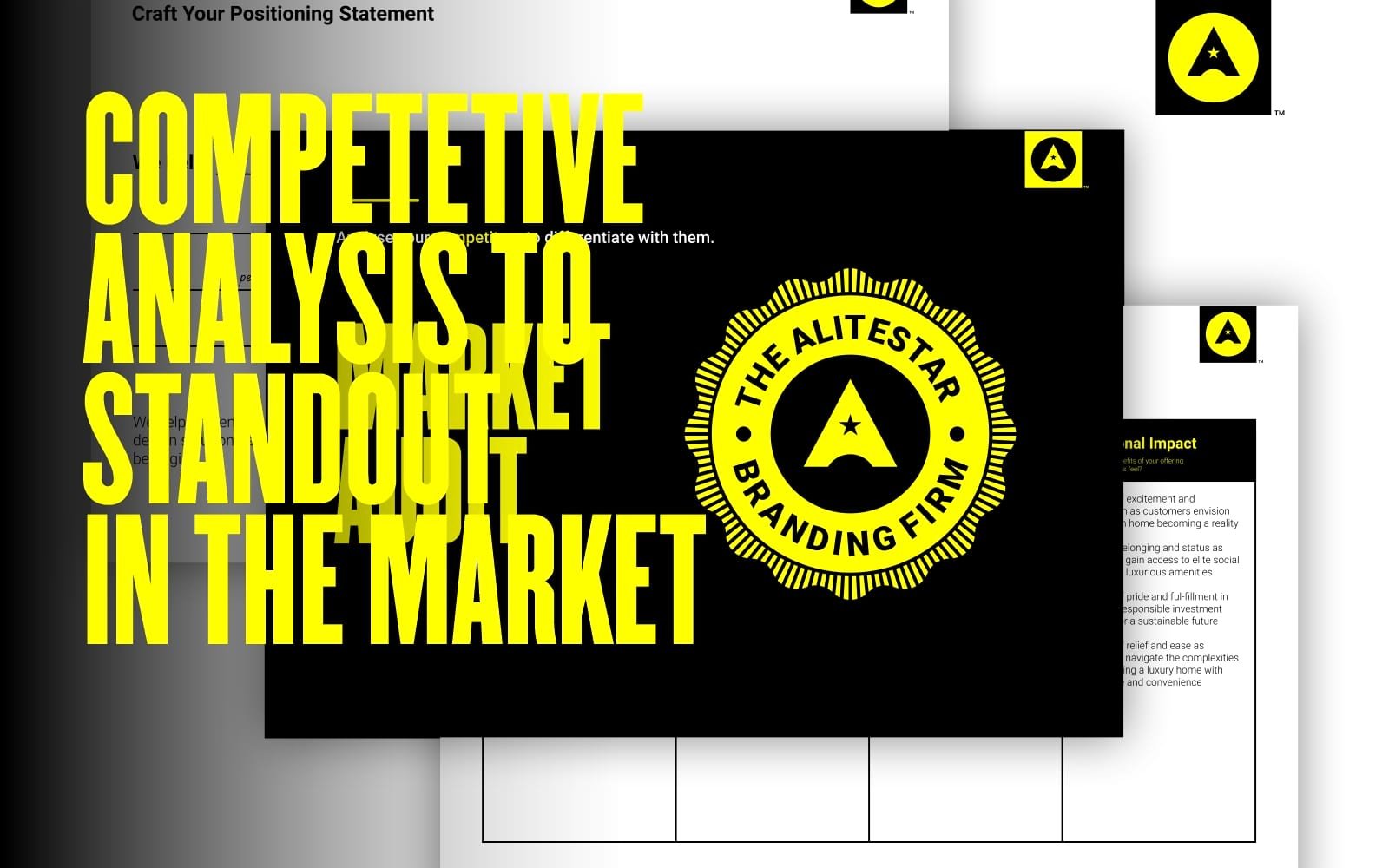
Performing a GAP analysis is like being a detective in the world of branding. It’s a methodical approach to uncovering the differences between where your brand currently stands and where you want it to be.
Identifying Opportunities: A GAP analysis helps you spot opportunities for growth and improvement.
Strategic Planning: It’s about plotting a course that takes your brand from good to great.
Enhancing Brand Strength: By understanding the gaps, you can strengthen your brand’s weak spots.
Driving Innovation: Gap Finding encourages creative thinking and innovation.
Focused Efforts: GAP analysis allows you to focus on what really matters for your brand’s success.
This is the final strategic element in our brand positioning module, where we explore all potential methods to raise your brand awareness.
Clear Direction: Your brand needs clear goals to drive it forward.
Efficient Resource Use: It ensures that your resources are invested in the most impactful areas.
Motivation and Momentum: Clear priorities keep your team motivated and moving forward.
Adaptability: Knowing your priorities makes it easier to adapt to changes and challenges.
Measurable Success: Prioritized goals give you milestones to measure your progress.

Brand personality refers to the unique and distinct personality that your brand conveys to its target audience. It includes the set of values, beliefs, traits, qualities, and characteristics that people associate with a brand.
Human Connection: Giving your brand a personality makes it relatable and memorable.
Distinct Identity: A unique brand personality helps you stand out.
Emotional Engagement: A brand with personality engages customers on an emotional level.
Consistent Communication: A well-defined personality ensures consistent brand messaging.
Brand Advocacy: Customers resonating with your brand’s personality become ambassadors.
In this brand personality strategy module, we will cover strategic elements like brand archetypes and the personality pyramid to give a unique and distinctive personality.
Brand Archetypes
Brand archetypes are the storytelling character that guides your brand’s narrative, giving it a compelling and authentic personality. Here’s how these timeless archetypes can shape a brand that resonates deeply with your audience:
Universal Resonance: Archetypes are universally recognized characters that transcend cultures, allowing your brand to connect with a diverse audience on a primal level.
Emotional Depth: Each archetype comes with its own set of values, motivations, and traits, providing a rich emotional palette to paint your brand’s personality.
Strategic Differentiation: By aligning with a specific archetype, your brand can differentiate itself in a crowded market, offering a unique perspective that captivates customers.
Narrative Clarity: Archetypes serve as a narrative framework, ensuring that your brand’s story is clear, consistent, and engaging across all touchpoints.
Authenticity and Trust: When customers see a brand embodying an archetype they admire, it builds trust and authenticity, turning casual buyers into loyal fans.
Imagine your brand as a character in the grand story of the market—a hero, an explorer, a caregiver, or any other archetype that aligns with your vision. This isn’t just about giving your brand a personality; it’s about crafting a persona that’s magnetic, one that draws people in and makes them feel like part of your brand’s journey.

Personality pyramid is another excellent framework that can help to define your brand personality or to give your brand a distinctive and unique personality. It is an effective framework for defining and sculpting your brand’s persona, inspired by the foundational principles of Maslow’s hierarchy of needs.
Here’s how it can be utilized to craft a brand personality that resonates with your audience:
Foundation of Values: At the base of the pyramid, your brand’s core values anchor its identity, much like a person’s beliefs shape their character.
Core Attributes & Benefits: At the pyramid’s base lie the fundamental qualities and advantages your brand offers. These are the solid foundations—like trustworthiness or innovation—that set your brand apart and provide real value to your customers.
Actions: Moving up, we find the Actions layer, which encompasses the behaviors and activities your brand engages in. This is how your brand demonstrates its core values, whether through customer service, community involvement, or product innovation.
Tone of Voice & Look and Feel: At the pyramid’s peak are the most visible elements: your brand’s tone of voice and aesthetic. These are the first things people notice and are crucial in making that all-important first impression.
When these layers align harmoniously, they create a strong and cohesive brand personality that not only stands out in the marketplace but also forms lasting connections with customers. It’s a strategic approach that ensures every aspect of your brand is working towards the same goal: building a solid and authentic brand that startups, small businesses, and entrepreneurs will find invaluable.

A mind map is a powerful tool for brand strategists, akin to a navigator’s chart that plots a course through the complex seas of branding. Here’s how a mind map can illuminate the path to a compelling brand identity:
Visual Clarity: A mind map turns abstract ideas into a visual storyboard, making it easier to understand and communicate your brand’s strategic vision.
Idea Generation: It encourages the free flow of thoughts, helping to uncover creative solutions and innovative approaches to branding challenges.
Organized Thoughts: By structuring ideas, a mind map helps prioritize actions and aligns them with your brand’s core objectives.
Collaborative Tool: It serves as a collaborative canvas that invites team members to contribute and refine the brand’s direction.
Strategic Overview: A mind map provides a bird’s-eye view of your brand strategy, ensuring all elements are cohesive and interconnected.
Imagine your brand’s strategy as a constellation in the sky. A mind map is the telescope that brings the stars into focus, revealing how they connect to form a bigger picture. It’s not just about plotting points; it’s about discovering the narrative that links them together.
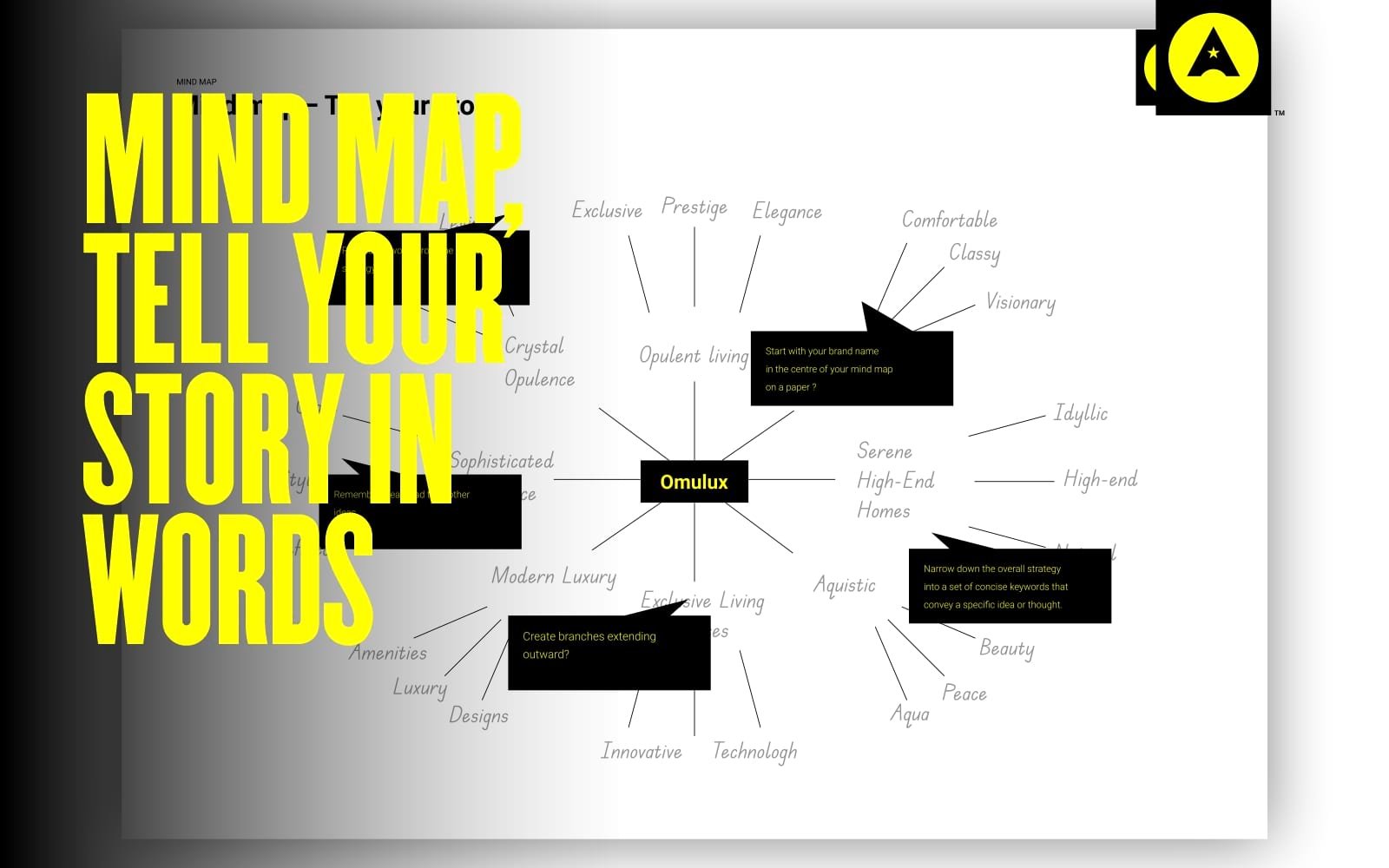
The journey to brand success is not just a path but a strategic ascent to the summit of business excellence. Our comprehensive Brand Strategy Core Guide is the seasoned sherpa that guides you through the intricate landscape of brand building. With our three pivotal modules—Brand Essence, Brand Positioning, and Brand Personality—and nine strategic elements, we provide a blueprint for a brand that not only stands tall but also stands out. Brand Essence is the heartbeat of your brand, the purpose, vision, and values that define your unique identity and resonate with your audience. It’s the soulful narrative that connects on an emotional level, driving decision-making and fostering trust.
Brand Positioning is your brand’s compass, ensuring you navigate the competitive terrain with precision. By understanding your target audience, conducting a thorough market audit, and prioritizing goals, you can chart a course that is both ambitious and achievable. Brand Personality is the character your brand portrays in the grand story of the market. Through brand archetypes, the personality pyramid, and mind mapping, we sculpt a persona that is not just seen but felt, not just known but experienced.
As you stand at the threshold of brand creation or evolution, remember that a strong brand is the cornerstone of growth and success. It’s the legacy you leave and the story you tell. Embrace our Brand Strategy Core Guide and let it be the catalyst that transforms your vision into a living, thriving brand.
Take this moment to reflect on your brand’s journey and the heights you wish to reach. Then, take the first step with confidence, knowing that our guide is here to illuminate the path to unparalleled success. Let’s build a brand that is not just a name but a beacon of excellence in the business world.
A: Brand Strategy is the master plan behind the scenes of successful brands. It’s the secret sauce that combines your business’s values, mission, and objectives into a cohesive narrative that captivates your audience.
A: It’s the difference between wandering in the dark and having a GPS in the world of business. A Brand Strategy illuminates your path, ensuring every marketing move aligns with your ultimate goals.
A: Just like a blockbuster movie without a script, a business without a Brand Strategy lacks direction and appeal. It’s not just about surviving; it’s about thriving, and that’s where a Brand Strategy steps in.
A: Think of Brand Strategy as the director of your branding movie. It calls the shots, sets the stage, and ensures that your brand’s story wins the audience’s hearts and minds.
A: It’s a journey of self-discovery for your brand. Start with understanding your unique value proposition, research your target audience, and then craft a narrative that resonates. It’s about connecting the dots between who you are, who you want to reach, and how you want to be perceived.
A: Our BRAND STRATEGY CORE GUIDE is like a treasure map for your brand’s success. It’s a proven comprehensive framework that walks you through the essentials of crafting a Brand Strategy that’s not just good, but legendary.


Shaikh Asif is an Award-winning designer, director, strategist, and educator. He’s the Lead Strategic Brand Designer and Art Director of The Alitestar— a strategic branding and design agency that helps startups, ambitious CEOs, and passionate entrepreneurs to achieve success and ultimately create unforgettable brand experiences.